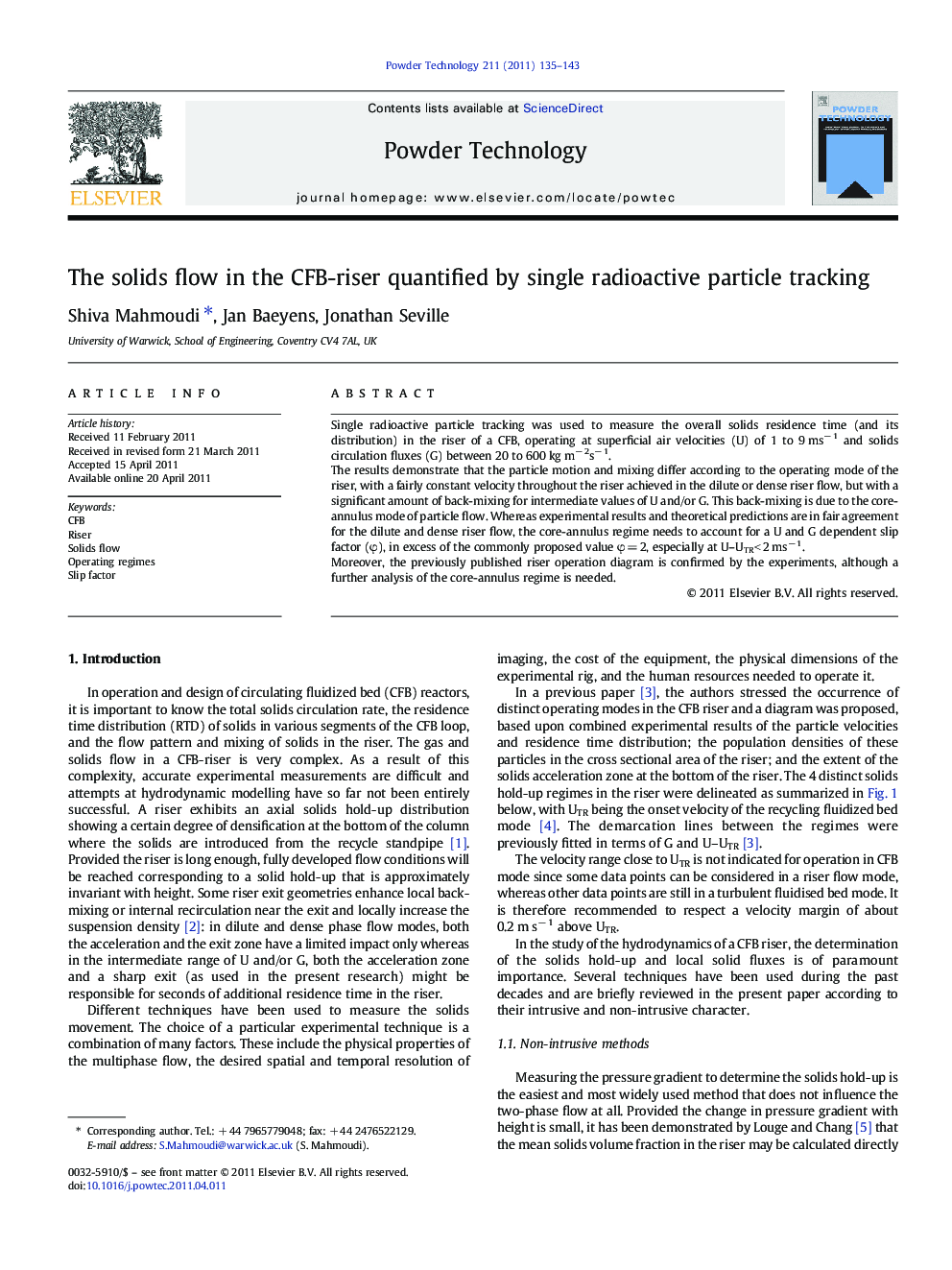| Article ID | Journal | Published Year | Pages | File Type |
|---|---|---|---|---|
| 237557 | Powder Technology | 2011 | 9 Pages |
Single radioactive particle tracking was used to measure the overall solids residence time (and its distribution) in the riser of a CFB, operating at superficial air velocities (U) of 1 to 9 ms− 1 and solids circulation fluxes (G) between 20 to 600 kg m− 2s− 1.The results demonstrate that the particle motion and mixing differ according to the operating mode of the riser, with a fairly constant velocity throughout the riser achieved in the dilute or dense riser flow, but with a significant amount of back-mixing for intermediate values of U and/or G. This back-mixing is due to the core-annulus mode of particle flow. Whereas experimental results and theoretical predictions are in fair agreement for the dilute and dense riser flow, the core-annulus regime needs to account for a U and G dependent slip factor (φ), in excess of the commonly proposed value φ = 2, especially at U–UTR < 2 ms− 1.Moreover, the previously published riser operation diagram is confirmed by the experiments, although a further analysis of the core-annulus regime is needed.
Graphical AbstractA single radioactive tracer is used to determine the overall particle motion and residence time in the riser of a CFB, for air velocity between 1 to 9 ms− 1 and solids circulation fluxes from 20 to 600 kg m− 2 s− 1.Figure optionsDownload full-size imageDownload as PowerPoint slideResearch Highlights► Single radioactive particle tracking in the CFB riser. ► Solids motion differs according to the operating mode of the CFB. ► Four flow modes are distinguished: dilute, core-annulus, dense, or combined with bottom bed. ► Slip factors are determined for the different flow modes.
